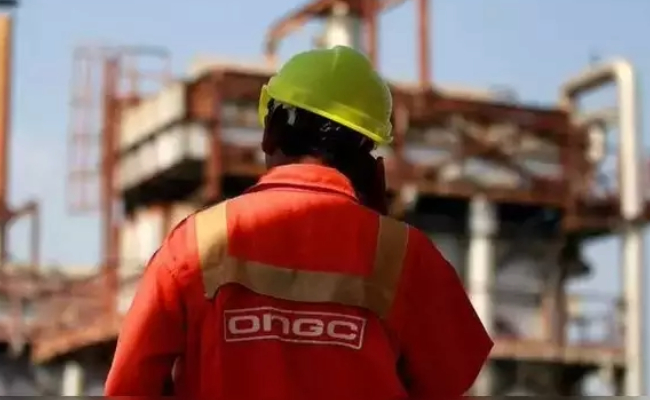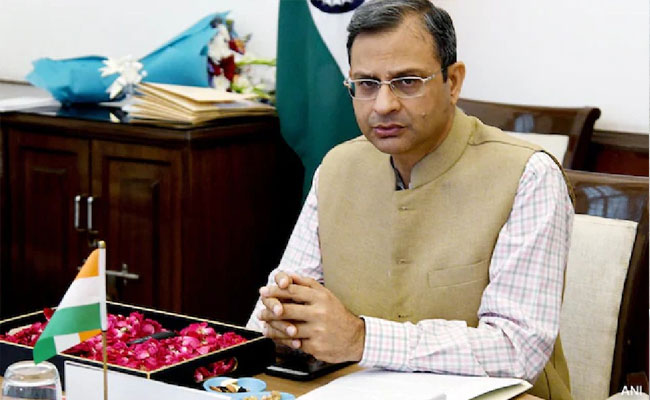New Delhi (PTI): State-controlled Oil and Natural Gas Corporation (ONGC) will kick off oil production from its much-delayed flagship deepsea project in Krishna Godavari basin in Bay of Bengal this month, helping reverse years of decline in output, a senior company official said.
"We plan to start producing from the Cluster-2 project in KG-DWN-98/2 block this month and slowly ramp up," ONGC Director (Production) Pankaj Kumar told PTI here.
A floating production unit, called FPSO, which will be used to produce oil, is already in the block. After several missed deadlines, ONGC has told Shapoorji Pallonji Oil & Gas (SPOG) that its floating production, storage and offloading vessel (FPSO) Armada Sterling-V should prepare to receive the first oil this month.
Oil production from Cluster-2 should have begun by November 2021, but was delayed because of the pandemic.
Kumar said ONGC plans to start producing from 3 to 4 wells initially and slowly connect others. "Initial production could be 8,000 to 9,000 barrels per day."
KG deepsea is treacherous terrain and ONGC is mindful of not repeating mistakes of neighbouring KG-D6 block of Reliance Industries.
While gas production is not so complex in the area, sand and water ingress in wells may happen if oil valves are opened too fast. The trick is to drill more wells and produce at the optimal quantities, not rushing in to produce bigger volumes, an official explained.
Kumar said ONGC will ship the first consignment of crude oil to subsidiary Mangalore Refinery and Petrochemicals Ltd (MRPL).
The crude will be tested and yields will determine its grade and pricing, he said.
ONGC has hired Armada Sterling-V, owned 70 per cent by SPOG and 30 per cent by Malaysia's Bumi Armada, for producing oil from below seabed.
The FPSO has been waiting to receive oil since January 2, 2023, after she was hooked up on December 27, 2022. ONGC previously set May 2023, as the first Cluster-2 oil deadline, extended to August 2023, September 2023, and finally, October 2023.
"These are extremely complex reservoirs and we need to be sure about everything before we start production," Kumar said.
The five M field wells, identified for the initial oil flow, sit in water depths of about 400 meters. Flexible hoses will connect the M field wells to the FPSO. Later, the A and P1 oilfield wells will be connected.
In all, 13 wells yielding oil and oil with associated gas will eventually be connected to Armada Sterling-V. Peak oil of 45,000 barrels per day is expected sometime in 2024-25. At peak, a tanker will berth alongside FPSO every two weeks to transport oil to a refinery where it will be turned into fuels like petrol and diesel.
Kumar said some 2 mmscmd of gas would also flow with oil but actual gas output will start in May 2024, when 7-8 mmscmd production is expected.
For that to happen, contractor McDermott needs to install the much-delayed Control and Process Platform (CPP) with Living Quarters and Upstream Platform (LQUP), which Malaysia's Sapura ENergy is manufacturing.
The giant structure is ready to sail from Malaysia and should be in Indian waters early next year. Gas production would start in the middle of 2024.
The production estimates are, however, much lower than what was originally projected. When the project was conceived in April 2018, ONGC had said the estimated capital expenditure would be USD 5.07 billion and operational expenditure would be USD 5.12 billion over a field life of 16 years.
Kumar said the company hopes to arrest the decline in crude oil production in the next fiscal, while natural gas output is likely to see a rise.
ONGC's KG-DWN-98/2 or KG-D5 block, which sits next to Reliance Industries' KG-D6 block in the KG basin, has a number of discoveries that have been clubbed into clusters.
It is situated offshore the Godavari river delta in the Bay of Bengal. It is located 35-km off the coast of Andhra Pradesh in water depths ranging from 300-3,200 metres. The discoveries in the block are divided into three clusters -- Cluster-1, 2 and 3. Cluster 2 is being put to production first.
The Cluster 2 field is divided into two blocks namely 2A and 2B, which as per the original investment decision were expected to produce 23.52 million metric tonnes of oil and 50.70 billion cubic metres (bcm) of gas over the life of the field.
Cluster 2A was estimated to contain reserves of 94.26 million tonnes of crude oil and 21.75 bcm of associated gas, while Cluster 2B is estimated to host 51.98 bcm of gas reserves.
Cluster 2A was anticipated to produce 77,305 barrels of oil per day (bopd) and associated gas at a rate of 3.81 million metric standard cubic metres per day (mmscmd) over 15 years.
Cluster 2B is expected to produce free gas of 12.75 mmscmd from eight wells and has a 16-year life. But now the output estimate is lower - 45,000 bpd of oil and up to 2.5 mmscmd from Cluster 2A and around 9 mmscmd from Cluster 2B.
Let the Truth be known. If you read VB and like VB, please be a VB Supporter and Help us deliver the Truth to one and all.
Amritsar (PTI): Former president Ram Nath Kovind on Friday said that with digital transformation, economic reforms and a strong focus on the ease of doing business, India is moving towards becoming a global economic powerhouse.
He was speaking after inaugurating the 19th edition of the Punjab International Trade Expo (PITEX) in Amritsar.
The former president said that this 19th edition of PITEX is being organised at a time when India is recognised as one of the fastest-growing large economies in the world.
Speaking at the inaugural ceremony of the event organised by the PHD Chamber of Commerce and Industry (PHDCCI) the former president, while referring to Punjab, said the state is a living example of courage, sacrifice and enterprise.
"The spiritual light of Sri Harmandir Sahib (Golden Temple) inspires peace and humanity across the world. The heritage of Punjab is deep and inspiring," Kovind said, according to a statement issued by the PITEX.
The former president congratulated the PHDCCI for hosting the 19th edition of PITEX and suggested that the chamber should expand PITEX outside Punjab.
He proposed that a similar event should also be held in New Delhi.


_vb_69.jpeg)


